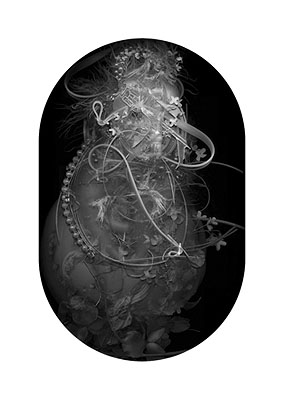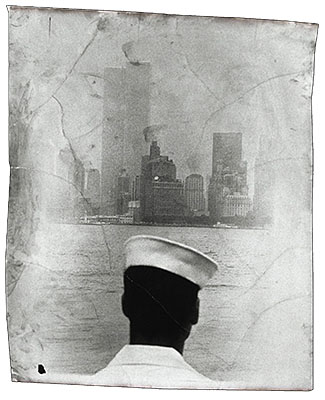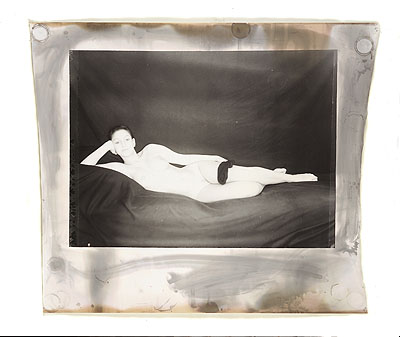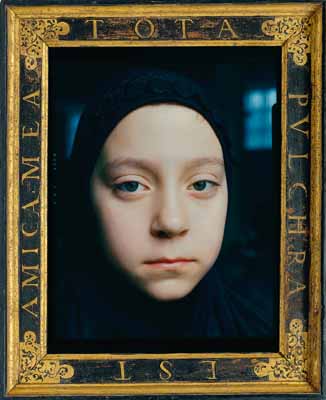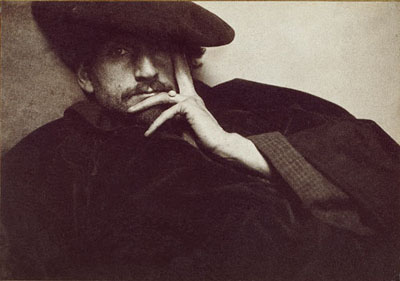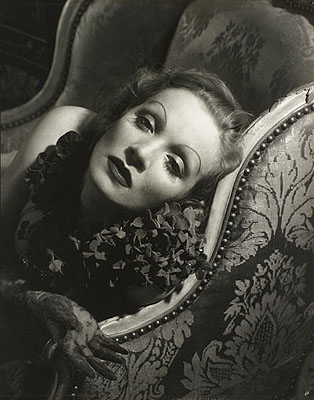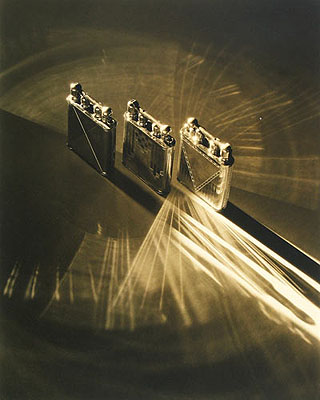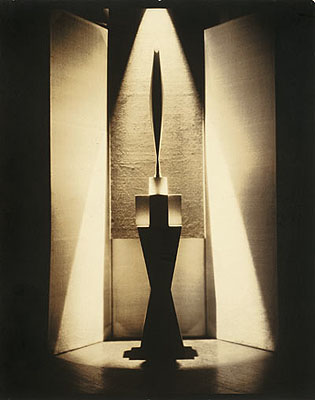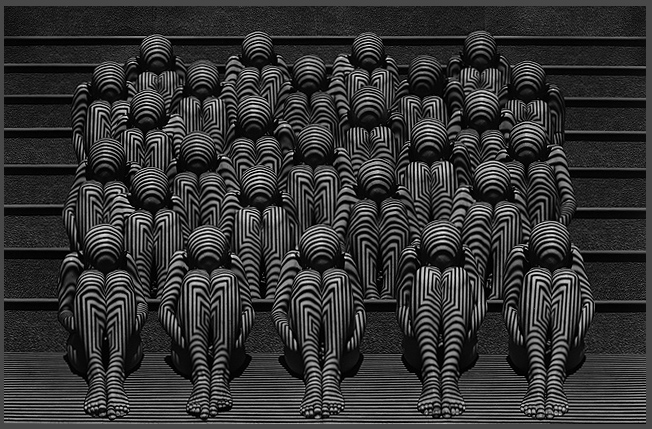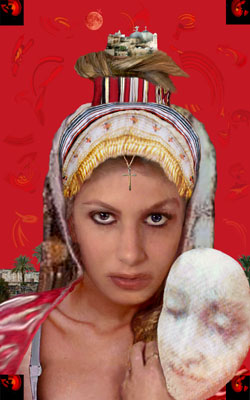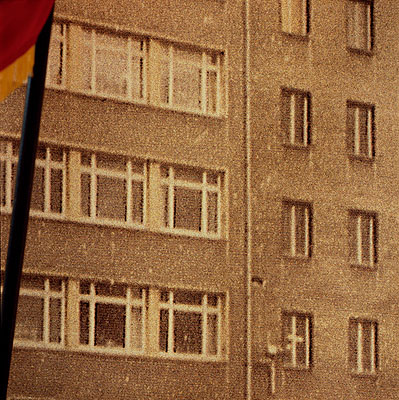Чуть возвращаясь. В книге Сергея Хоревского имеется описание фотографий Бенедикта Тышкевича. Того самого, который в такой вот версии «Истории литовской фотографии»:
http://samogitia.mch.mii.lt/KULTURA/fotoapzvalga.lt.htm
фигурирует как первый литовский фотохудожник:
Benediktas Henrikas Tiškevičius
Benediktas-Henrikas Tiškevičius — pirmasis fotomenininkas Lietuvoje…
А вот — публикация по свежим следам далекого уже 1999-го, был каталог и разворот со снимками в литовской «Республике». Как бы Денис Романюк пишет:
Фатограф граф Тышкевіч
Сэнсацыйная выстава адкрывае нам аднаго з бацькоў беларускае фатаграфіі
«Цэнтар сучаснага мастацтва ў Вiльнi сустракае новае стагодзьдзе здымкамі графа Бэнэдыкта Тышкевiча, які нарадзіўся ў родавым котлішчы Тышкевічаў, Лагойску, а меў маёнткі ў Налібоцкай пушчы й пад Коўна. На выставе прадстаўленыя невядомыя ў Беларусі здымкі працы нашага земляка. Зусім унікальна тое, што большасьць зь іх прысьвечаная беларускім народным тыпажам канца таго стагодзьдзя. Гэтая выстава — агульны праект Музэю фатаграфіі гораду Нэсэфор Н’епс (Францыя) і Цэнтру сучаснага мастацтва. Разам з фота графа Тышкевiча (1852—1935) тут прадстаўленыя творы… нашага сучасьніка, француза Джона Бато, які натхніўся здымкамі нашага земляка.
У 1993 годзе музэй Н’епсу выпадкова купіў у парыскага антыквара цудам ацалелы альбом фатаграфіяў Тышкевiча: 86 адбіткаў на кардоннай аснове, якія зафіксавалі разнастайныя мясьціны і людзей Беларусі, Францыі і Італіі. Увогуле, архіў Тышкевiча згарэў пад час першае сусьветнае вайны. Гэткі ж лёс напаткаў і калекцыю твораў мастацтва, што захоўвалася ў беларускім мястэчку Вялаве, што ў Налібоцкай пушчы. Ад усяго, імаверна, застаўся толькі гэты альбом…
…Графа Тышкевiча былі забылі ў Беларусі. Хоць яе, свой радзінны край, ён зрабіў несьмяротным у здымках. Тутака і фатаграфіі вяскоўцаў, і местачкоўцаў, і рамесьнікаў. У іх максымальна выявіўся мадэрнізм і рамантызм творцы. Для тагачаснай фатаграфіі былі ўласьцівыя пераапрананьне пэрсанажаў у касьцюмы, не ўласьцівыя часу й сацыяльнаму стану, клясычныя мізансцэны. Фатаграфіі беларускіх сялянаў й вясковых прыгажуняў у строях таго часу, у натуральным асяродзьдзі — гэта сьведчаньне адкрытага сьветапогляду і ўважлівага вока Тышкевіча. Тут і здымкі ягонага палацавага побыту, і інтэр’еры вясковых хатаў і корчмаў, стылёвыя будуары і салёны, сядзібы й кухні, вясковыя сцэнкi і партрэты сваякоў. Прага чалавека таго часу да фатаграфіі рабіла яго адказным перад кожным адбiткам — сярод iх няма выпадковых, а замiлаваньне, зь якім пабудаваныя кампазыцыі, сьведчыць аб вялікім прафэсіяналізме. Ягоныя творы — шэдэўры беларускае фатаграфіі».
Полный текст:
http://nn.by/1999/34/03.htm
*
Nicéphore Niépce Museum Exhibition : BENEDYKT HENRYK TYSZKIEWICZ (1852 - 1935) - Les spectres du manoir rouge

http://www.museeniepce.com/expositions/ ... kt&lang=us
The count Benedykt Tyszkiewicz (Wilno, December 11th, 1852 - France,1935) is a perfect exemple of the affluent landlord resorting to a modern device such as photography in order to record a world considered unchanging, invariable and natural. But beyond a simple pastime, the count-photographer devoted his knowledge of reproduction and his fortune to fiction and to a romantic reconstruction of Lithuania. A posthumous inventory describes a room in the Red Manor that is entirely covered in photographic prints, portraits of relatives and friends. Young Benedykt’s introduction to photography was heightened and punctuated by numerous trips abroad, particularly in France.
The earliest attested photographic works date back to 1875. An amateur of antiques and cruises, the count-photographer hired a crew to sail the world and carry out archeological and photographic expeditions in India, China and Japan.
He later settled in Madeira and then in France, in his Neuilly residence. His definitive infatuation for photography dates from this
period. He developed a particular taste for staged scenes, self-portraits and " antique style " portraits.
An aristocrat and photographer of the late nineteenth century, he was simultaneously a view-taker, a chemist, a lab assistant and a collector of images. For Benedykt Tysziewicz, photography was the continuation of the Beautiful, exhibited so well in the art and antique collections at his manor-house. The count’s photographic modernity thus appears as the will to record and save a world of fiction, free from class oppositions and outside history. Time suspended, frozen images. This is why one may still bury oneself in these pictures of things which never existed, save for their author.
These images of late nineteenth century Lithuania are taken from one of the count Tyszkiewicz’s original albums, owned by the musée Nicéphore Niépce since 1993.
Tyszkiewicz
Fotografijų albumas / Photographies
Leidykla: Baltos lankos
ISBN: 9955-00-025-2
Puslapių skaičius: 107
Formatas: 0x0 cm
Įrišimas: Kietas
Kaina 28.10 Lt
http://super.balsas.lt/index.php?cid=34 ... yszkiewicz
Prieš šimtą metų
Tyszkiewicz. Fotografijų albumas. Vilnius, "Baltos lankos", 2002, 107 p.

Tyszkiewicz. Be pavadinimo (Tyszkiewicziaus dukra Elisabeth Marie de Tyszkiewicz)
http://www.culture.lt/7md/?kas=straipsn ... st_id=2006
Еще:
27.09.2005
Традыцыі беларускага фотамастацтва
Вячаслаў Ракіцкі, Прага
Перадача 1-я. Фатографы-арыстакраты
http://www.svaboda.org/PrintView.aspx?Id=800446
(Ракіцкі: ) …каго з той плеяды фатографаў-арыстакратаў у Беларусі пакуль зусім ня ведаюць?”
(Харэўскі: ) “Я найперш назваў бы графа Бэнэдыкта Тышкевiча, які нарадзіўся ў родавым котлішчы Тышкевічаў, Лагойску, а меў маёнткі ў Налібоцкай пушчы і пад Коўнам. У 1999 годзе ў Вільні адбылася выстава ягоных твораў. Гэта была сапраўдная сэнсацыя, незаўважаная тады ў нас. Зусім унікальна было тое, што большасьць зь іх прысьвечаная беларускім народным тыпажам канца ХІХ стагодзьдзя. А выставу зрабіў Музэй фатаграфіі гораду Нэсэфор Н’епс, гэта ў Францыі, дзе Бэнэдыкт Тышкевіч правёў свае апошнія гады (ён дажыў да 1935 году). У 1993 годзе музэй Н’епсу выпадкова купіў у парыскага антыквара цудам ацалелы альбом фатаграфіяў Тышкевiча: 86 адбіткаў на кардоннай аснове, якія зафіксавалі разнастайныя мясьціны і людзей Беларусі, Францыі і Італіі. Увогуле, архіў Тышкевiча згарэў у часе першай усясьветнай вайны. Гэткі ж лёс напаткаў і калекцыю твораў мастацтва, што захоўвалася ў ягоным беларускім маёнтку Вялаве, што ў Налібоцкай пушчы. Ад усяго, імаверна, застаўся толькі гэты альбом. Шкада што тая выстава не даехала да Беларусі.”
(Ракіцкі: ) “Сапраўдная сэнсацыя! Паколькі для бальшыні нашых слухачоў гэтае імя гучыць упершыню, то хацелася б даведацца крыху больш пра гэтую асобу – пра Бэнэдыкта Тышкевіча.”
(Харэўскі: ) “Бэнэдыкт Тышкевіч быў заможным арыстакратам, які атрымаў у спадчыну шмат нерухомасьці і капіталу, знаходзіў радасьць ня толькі ў шляхетных паляваньнях і балях, але і ў археалёгіі і фатаграфіі. Граф арандаваў караблі, каб зьезьдзіць у экспэдыцыі, аб’ехаў Індыю, Кітай, Японію. Аднаго разу нават вакол сьвету на яхце пусьціўся. Свае лепшыя здымкі ён экспанаваў на выставе ў Філядэльфіі, у Амэрыцы (1876). У іх максымальна выявіўся мадэрнізм і рамантызм творцы. З таго часу да яго прыходзіць усясьветная слава фатографа-падарожніка. У 1883 годзе, калі памірае жонка, граф з трыма дзецьмі вяртаецца ў Францыю, уладкоўваецца ў сваім маёнтку ў Нёі, дзе цалкам прысьвячае сябе фатаграфіі".
(Ракіцкі: ) “Фатографа графа Тышкевiча ня ведаюць у Беларусі. Вы кажаце пра ягоную вядомасьць па-за межамі Беларусі. Проста так слынным у мастацтве ня станеш. Што ўласьціва было ягоным здымкам, якія яго праславілі?”
(Харэўскі: ) “Па- першае, ён адчуваў адказнасьць перад кожным адбiткам — сярод iх няма выпадковых, а замiлаваньне, зь якім пабудаваныя кампазыцыі, сьведчыць аб вялікім прафэсіяналізьме. Ягоныя творы — сапраўдныя шэдэўры беларускай фатаграфіі. Тутака і фатаграфіі вяскоўцаў, і местачкоўцаў, і рамесьнікаў. Фатаграфіі беларускіх сялян і вясковых прыгажунь у строях таго часу, у натуральным асяродзьдзі — гэта сьведчаньне адкрытага сьветапогляду і ўважлівага вока Тышкевіча. Бо для тагачаснай фатаграфіі былі ўласьцівыя пераапрананьне пэрсанажаў у касьцюмы, не ўласьцівыя часу і сацыяльнаму стану, клясычныя мізансцэны. Тут і здымкі ягонага палацавага побыту, і інтэр’еры вясковых хат і корчмаў, стылёвыя будуары і салёны, сядзібы й кухні, вясковыя сцэнкi і партрэты сваякоў. Гэта наша сапраўдная клясыка! Ён увасобіў у фота найважнейшыя характарыстыкі Беларусі і беларусаў таго часу.”
(Ракіцкі: ) “Тое, што Вы расказваеце, надзвычай цікава і захапляюча. Але гэта толькі словы, якімі мастацтвазнаўца пераказвае тое, што адлюстравана на старых здымках. Дзе іх можна было паглядзець? Гэта першае. І яшчэ. Фатаграфія захоўвае прыкметы часу, тыпы людзей. Яна і хроніка. Ці выкарыстоўваліся гэтыя і ім падобныя здымкі старых беларускіх майстроў фатаграфіі гісторыкамі, культуролягамі, мастацтвазнаўцамі?”
(Харэўскі: ) “Ажно ў 1863 годзе менавіта ў Менску выйшаў у сьвет падвойны нумар (№ 8/9) адзінага тады ў Расеі мастацка-літаратурнага часопісу “"Фотографическая иллюстрация" (ранейшыя выходзілі недзе ў Цьвяры). У тым менскім нумары былі зьмешчаныя краязнаўчыя артыкулы пра творчасьць аднаго з заснавальнікаў нашай фатаграфіі Прушынскага і самы раньні, зь вядомых, фотаздымак Менску. А ў 1894 годзе ўжо быў выдадзены першы беларускі мастацкі фотаальбом “Белавеская пушча”, пад рэдакцыяй Вешнякова. Здымкі Банольдзі, Чаховіча, Прушынскага шматкроць рэпрадукаваліся ў нашай краязнаўчай літаратуры, у артыкулах Кісялёва, Каханоўскага, Янушкевіча. Але не зварачалася адмысловай увагі на аўтарства здымкаў. Безьліч здымкаў Яна Булгака і Яна Балзункевіча зьмяшчаліся ў даведніках, энцыкляпэдыях, кнігах і публікацыях Пазьняка, Дзянісава, Шыбекі. Але ўжо ў нашым стагодзьдзі тыя фотамастакі дачакаліся і сваіх уласных кнігаў у Беларусі. Нямала для вяртаньня імёнаў славутых беларускіх фатографаў было зроблена дзякуючы часопісам “Мастацтва” і “Спадчына”, галерэяй “NOVA”, тое-сёе маем цяпер і ў Інтэрнеце. Але відавочна гэтага замала.”
|
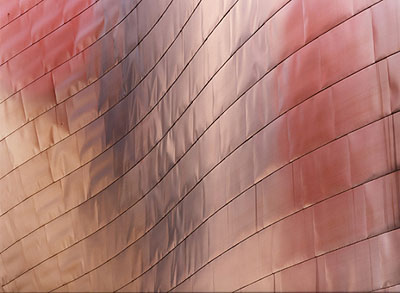




/92-2.jpg)
